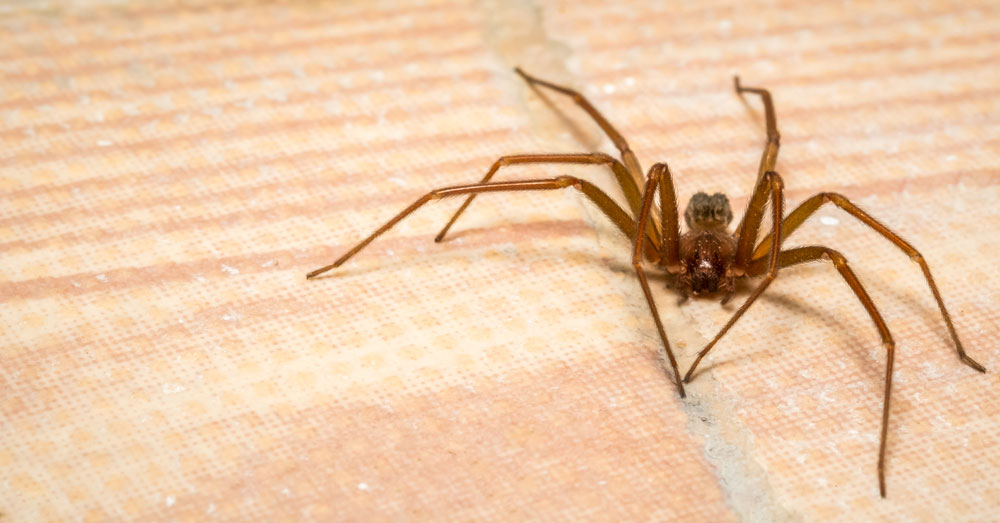Brown Recluse

The brown recluse spider is a meduim-sized, soft-bodied spider, 1/4 to 1/2 inch long. It is yellowish tan to brown in color with long, delicate legs. The legs are grayish to dark brown with no obvious pattern, while the base of the legs are more yellow-orange in color. Although the legs are covered with very minute brown hairs, they appear brown to the naked eye. Each foot has two claws. The cephalothorax is somewhat flattened above and bears six eyes (most other spiders have eight eyes) arranged in a semi-circle pattern in the front. A dark fiddle-shaped marking begins right behind the eyes and extends almost the entire length of the cephalothorax. Positive identification of this species sometimes requires the expertise of a spider expert. These spiders spin small, loose, white to off-white webs with irregular strands. The eggs are deposited in loose silken sacs, about 5/8 inch in diameter, which are hung in the web over the winter. The spiderlings weave loose webs of sticky silk when they disperse in the spring. The immature spiders look similar to the adults but may be lighter in color.
The brown recluse feeds on a wide variety of small insects. Cockroaches and other household pests can sustain spider infestations indoors. The brown recluse can live for long periods without food. The female lays eggs from May to August in sacs that contain 40 or more eggs, which she guards until she dies. A female will bear as many as 300 eggs during her lifetime. These spiders mature in about 11 months and may live as long as two years. This spider can be found outdoors in sheltered corners among debris, under loose bark and stones, in wood piles, on docks and on boats. The brown recluse is usually found indoors, especially in bathrooms, bedrooms, closets, garages, basements and cellars. Sometimes it takes shelter under furniture and rugs.
The brown recluse is not aggressive, but it usually bites when it is disturbed or is being crushed. The bite is not felt and the pain develops later. The reaction from the bite ranges from relatively mild to severe. Some bites can result in a large gangrenous area which sloughs, leaving a sunken, ulcerating sore up to six inches across which heals slowly. If you know you have been bitten by a brown recluse, seek medical treatment immediately.
Very few residual pesticides will effectively control spiders for any length of time. We have two products that have been proven effective for long-term control. One is a liquid concentrate, which can be sprayed on spider harborages for a treatment that will last for months. The other is a dust that can be applied in attics and wall voids and, because it is water-proof, it can also be used in areas of high moisture.
If you have any questions about these products, please visit your nearest Pestop location.

